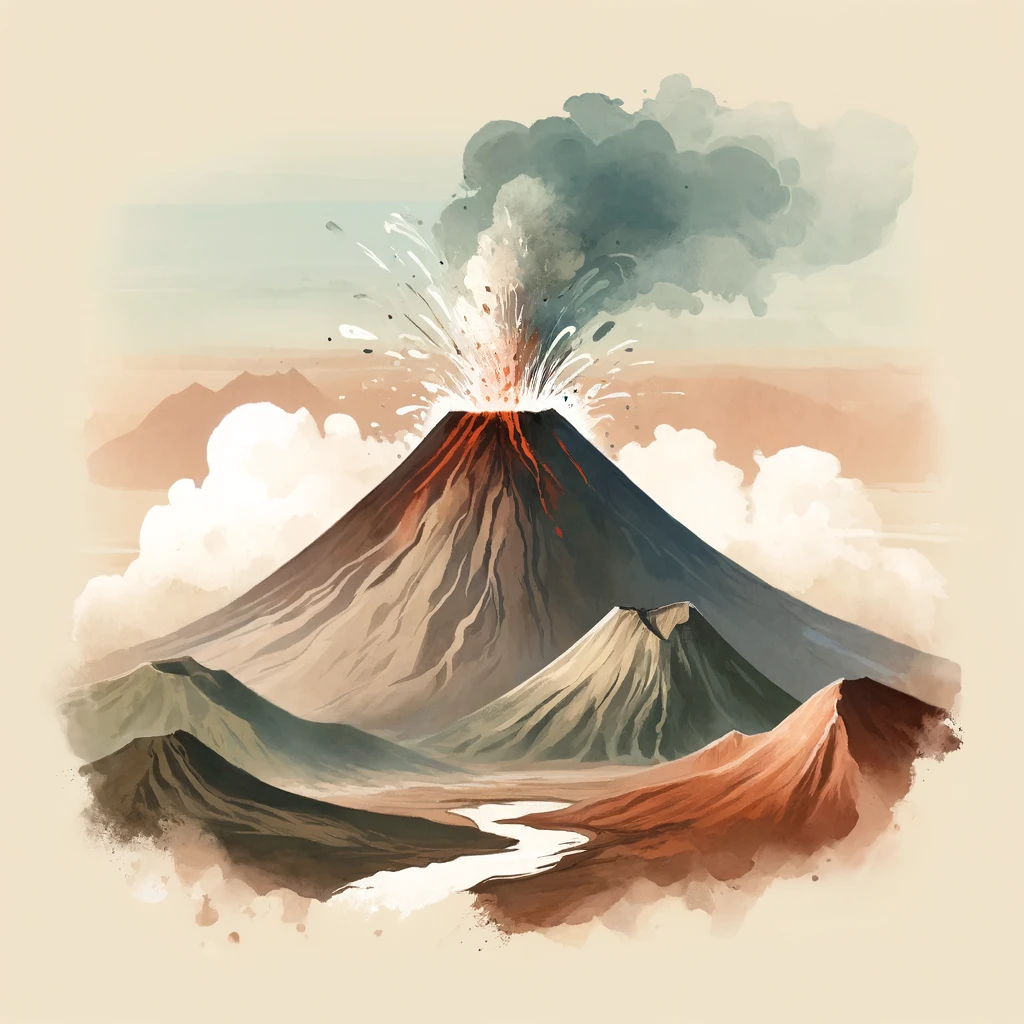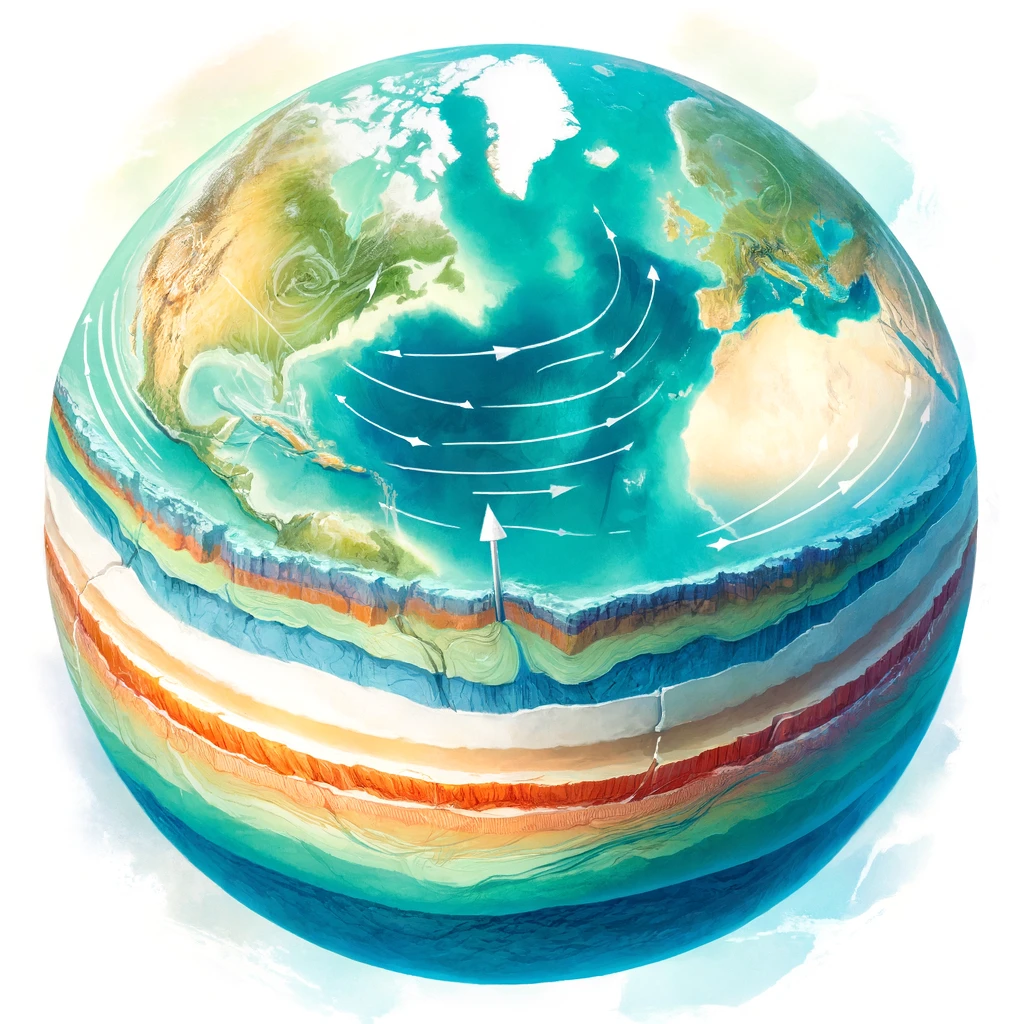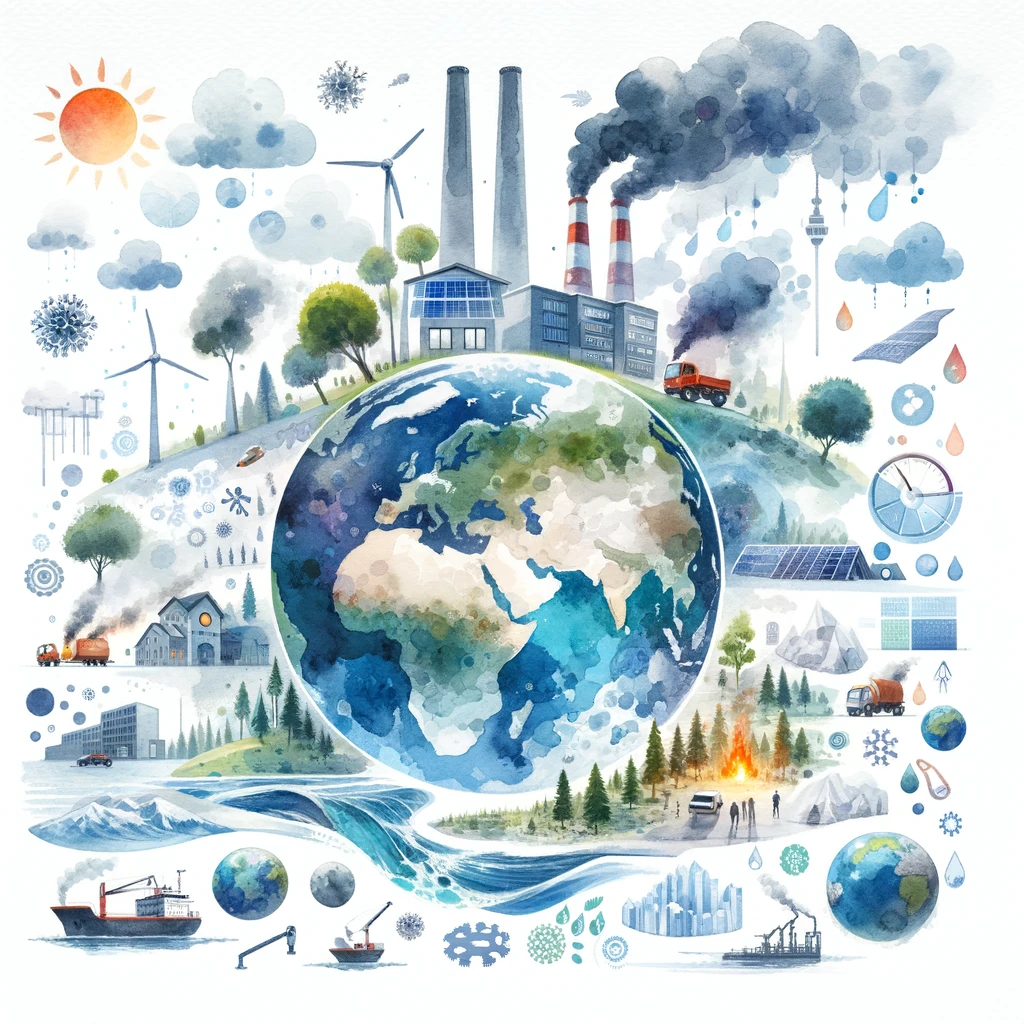Volcanism refers to the processes and phenomena associated with the movement of molten rock, or magma, from the Earth’s interior to its surface. It is a critical aspect of geomorphology and significantly impacts the Earth’s landscape. This article delves into the various types of volcanoes, the nature of volcanic eruptions, the formation of volcanic landforms, and the global distribution of volcanic activity.
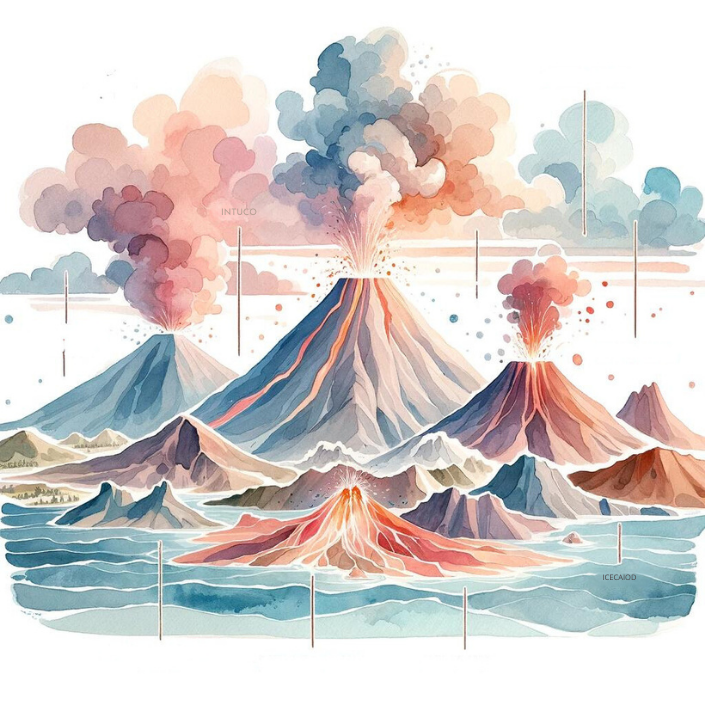
Types of Volcanoes
Shield Volcanoes
- Characteristics: Shield volcanoes have broad, gently sloping sides formed by the eruption of low-viscosity basaltic lava that can flow over great distances.
- Examples: Mauna Loa and Mauna Kea in Hawaii.
- Formation: They form over hot spots where magma from deep within the Earth rises through the crust.
Composite Volcanoes (Stratovolcanoes)
- Characteristics: Composite volcanoes are characterized by steep, conical profiles and are composed of alternating layers of hardened lava flows, tephra, pumice, and volcanic ash.
- Examples: Mount Fuji in Japan, Mount St. Helens in the USA, and Mount Vesuvius in Italy.
- Formation: They typically form along convergent plate boundaries where subduction zones force magma upwards.
Cinder Cone Volcanoes
- Characteristics: These are the smallest and most common types of volcanoes, built from particles and blobs of congealed lava ejected from a single vent.
- Examples: Parícutin in Mexico, Sunset Crater in Arizona, USA.
- Formation: They form from explosive eruptions that blow magma fragments into the air, which then fall around the vent, creating a circular or oval cone.
Calderas
- Characteristics: Calderas are large, basin-like depressions formed when a volcano erupts and collapses.
- Examples: Yellowstone Caldera in the USA, Krakatoa in Indonesia.
- Formation: They form when the magma chamber empties during an eruption, causing the ground above to collapse into the emptied space.
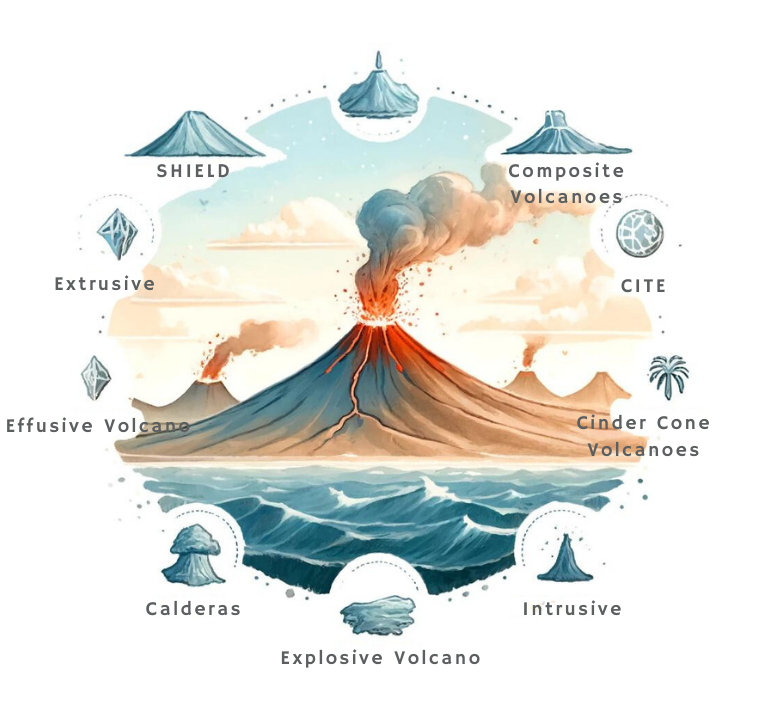
Volcanic Eruptions
Explosive Eruptions
- Characteristics: These eruptions are violent, sending ash, gas, and volcanic rock high into the atmosphere.
- Hazards: Pyroclastic flows, ashfall, volcanic bombs, and tsunamis.
- Examples: The eruption of Mount St. Helens in 1980, and Krakatoa in 1883.
- Case Study: Mount St. Helens – The eruption in 1980 blew off the top of the mountain, resulting in widespread ashfall and pyroclastic flows that caused significant destruction and loss of life.
Effusive Eruptions
- Characteristics: Effusive eruptions involve the relatively gentle outpouring of lava onto the ground.
- Hazards: Lava flows can destroy everything in their path but typically move slowly enough for people to evacuate.
- Examples: Kilauea in Hawaii, which has been erupting continuously since 1983.
- Case Study: Kilauea – Known for its frequent and effusive eruptions, Kilauea’s lava flows have created new land but also threatened local communities and infrastructure.
Volcanic Landforms
Intrusive Volcanic Landforms
- Batholiths: Large masses of intrusive igneous rock that form from cooled magma deep in the Earth’s crust. Example: Sierra Nevada batholith in California.
- Sills: Horizontal intrusions of magma between older layers of rock. Example: Great Whin Sill in England.
- Dykes: Vertical or steeply inclined sheets of magma that cut across pre-existing rock layers. Example: Shiprock in New Mexico.
Extrusive Volcanic Landforms
- Lava Plateaus: Extensive flat areas formed by successive lava flows. Example: Deccan Traps in India.
- Volcanic Mountains: Mountains formed from volcanic activity. Example: Mount Kilimanjaro in Tanzania.
Formation Processes:
- Intrusive landforms form when magma cools and solidifies below the Earth’s surface, while extrusive landforms form from lava that cools and solidifies on the surface.
Distribution of Volcanoes
Pacific Ring of Fire
- Location: Encircles the Pacific Ocean.
- Characteristics: This region has a high level of seismic activity, including numerous earthquakes and active volcanoes.
- Examples: Mount Fuji in Japan, Mount St. Helens in the USA, and Krakatoa in Indonesia.
Mediterranean Region
- Characteristics: Known for active volcanoes due to the convergence of the African and Eurasian plates.
- Examples: Mount Vesuvius in Italy, and Santorini in Greece.
Volcanic Activity in Iceland
- Characteristics: Located on the Mid-Atlantic Ridge, Iceland has high volcanic activity due to divergent tectonic plate boundaries.
- Examples: Eyjafjallajökull, which erupted in 2010 causing widespread air travel disruption.
Volcanic Activity in Hawaii
- Characteristics: Hawaii’s volcanoes are primarily shield volcanoes formed over a hot spot in the middle of the Pacific Plate.
- Examples: Mauna Loa, Kilauea.
Conclusion
Understanding volcanism and volcanic landforms is crucial for appreciating the dynamic nature of the Earth’s surface. These processes not only shape the landscape but also have significant implications for human life and the environment. For UPSC aspirants, a thorough knowledge of these concepts is essential for excelling in geography and related subjects.

